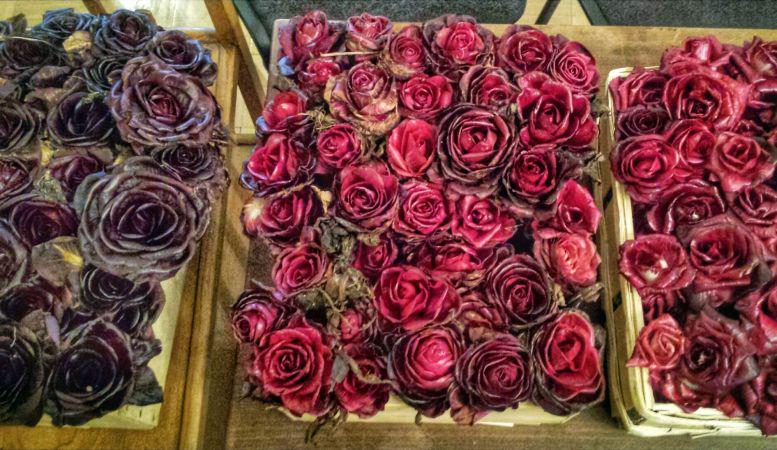
Years ago, an extensive advertising campaign was launched to promote the Rose of Gorizia, also known in Slovenia as the Solkan Radicchio (solkanski radič): it has enjoyed a strong presence in the media, there have been themed dinners featuring this type of radicchio, it has been served as a delicacy in restaurants, and its extract has been used to make a special liqueur.
In late February, an ambitious two-day seminar dedicated to this type of radicchio was held in Gorizia. The initial press conference was followed by a lunch with the Rose of Gorizia as the star ingredient. The participants then visited the fields where the vegetable is grown, and they capped off the day with a dinner at the Lanthieri Mansion. The six course feast was prepared by the Italian chef Emanuele Scarello, who works at Agli Amici (**) in Udine.
Difficult to grow
What’s so special about this type of radicchio? For one, it is very difficult to grow. Only 20 percent of the plant remains usable after the outer leaves wilt and die off, giving this type of radicchio its beautiful rose-like appearance. The seeds sprout in the spring, and the radicchio grows in poor soil. Its roots are very deep, and it is harvested in November, even though it is not fully mature at that point.
The radicchio is then put into a cold (15-20 degrees Celsisus) and dark environment for two weeks, where the outer leaves fall off, the heart becomes lighter in colour, and the stem turns pale. Only then can it be sold. The Rose of Gorizia is hand grown and harvested. “A unique phenomenon that requires dedication, mastery, knowledge and experience,” the growers say.
Tradition and passion
The Rose of Gorizia has been grown in the region for over 200 years (it was first mentioned by Carl von Czoernig, a Habsburg baron, in 1784). This tradition has been handed down from generation to generation, but very few people still grow the Rose of Gorizia. There are only 12 growers in Italy and even fewer in Slovenia.

































































